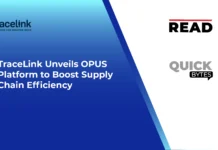Siemens Financial Services launched the Decarbonization Business Optimizer (DBO™), a cloud-based tool created to help address the overwhelming complexity of decarbonizing buildings and the financing needed to get to net-zero emissions. The DBO is a free, digital web tool that removes the initial knowledge barrier and uncovers more efficient strategies to help decarbonize a company’s facilities. The scenario modeling and optimization tool aggregates and leverages data from relevant governmental agencies including the U.S. Department of Energy (DOE), the Environmental Protection Agency (EPA), and the DOE’s National Renewable Energy Laboratory (NREL).
“Companies, specifically those in the supply chain, are increasingly asked to report their carbon footprint to their customers — yet many do not know where to begin,” said Anthony Casciano, President and CEO of Siemens Financial Services, Inc. “The DBO addresses these barriers by taking action and puts companies of all sizes, and at all stages, in a better position to create long-term value, accelerating participation in the transition to net-zero emissions.”
The DBO generates cost effective decarbonization scenarios for each facility using the address, facility size and type (for example, a hospital, office building, manufacturing plant, etc.). The estimated carbon footprint calculated for the facility, as well as the energy cost, is based on data relevant to its geographic location, enabling a more accurate estimate than using country-wide averages. The tool also considers site-specific data such as the annual energy use or load profile, if available, to generate an even more accurate result.
Also Read: ikeGPS Unveils Next-Gen AI Analytics for Utility Poles
“A lack of data sometimes can deter companies from initiating a sustainability strategy,” said Lee Evangelakos from American Industrial Partners (AIP). “As an initial tester, we found that the DBO tool is a great way to get started in estimating facility footprints. The tool enables industrial businesses to think through the building blocks of their emissions profiles and how they could begin to take action towards decarbonization.”
Users can discover and choose a combination of generation and storage technologies that makes the most sense for their site such as solar panels, combined heat and power (CHP), thermal energy storage, battery storage, and more. Customized decarbonization scenarios can also be generated based on a desire for specific technologies, resilience to grid outages, or a maximum budget, enabling data-driven decarbonization decision making. The tool also provides a summary of estimated return on investment (ROI).
“Trusted data sets coupled with credible modeling and analysis tools are vital in the complex decision-making process to achieve a clean energy future,” said Roderick Jackson, Laboratory Program Manager for Building Technologies at NREL. “NREL-developed tools are built to be leveraged in this way—including ComStock™, REopt®, and our Annual Technology Baseline framework. It’s great to see that in practice.”
SFS developed the tool in partnership with Siemens Technology, the company’s central R&D department. The tool is built on AWS, utilizing server-less architecture to lower its workload carbon footprint by allowing the DBO to operate only when needed, rather than running constantly. A recent study estimates AWS’s infrastructure is up to 4.1 times more efficient than on-premises, and when workloads are optimized on AWS, the associated carbon footprint can be reduced by up to 99 percent.
SOURCE: Businesswire




